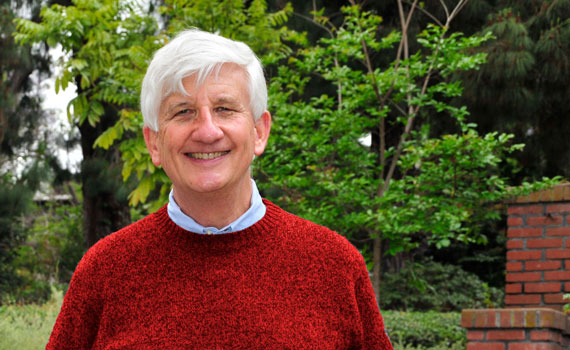|
SOHO President's Message
By David W. Goldberg
January/February 2022
 Photo by Sandé Lollis |
Preservation definitely can feel like a roller coaster! Successes are exhilarating and losses a punch to the gut. When a threatened building is acquired by someone with the knowledge, ability, and means to do what's right, there's a huge sense of relief: "One more" has been saved—at least for the time being. Losses can be immensely discouraging, especially when a structure has historic and architectural significance beyond the local community. A still-painful case in point is the 1979 destruction of the 1907 Melville Klauber House designed by Master Architect Irving J. Gill. We are forever poorer for this loss.
Architecture is our most fragile artform and, bluntly put, many buildings are only one owner away from destruction. This is the great conundrum of historic preservation. What's a preservationist to do?
Generally, for landmark structures house donations make sense when the intent and wishes of the owners align with those of the receiving organization and the recipient has the ability, institutional knowledge, and financial wherewithal to properly care for the property. Providing a funding source for future upkeep will often be a necessity. That said, this is probably the best way to ensure the long-term preservation of a historic structure.
Recently, the San Diego preservation community received some wonderful news when Nancy, Joseph, and Pamela Manno announced they will be gifting their home, Case Study House #23C in La Jolla's Hidden Valley neighborhood, upon their passing, to the La Jolla Historical Society. It is one of three adjacent case study houses, jointly called Triad and completed in 1960. The Long Beach-based firm of Killingsworth, Brady and Smith, led by Edward Killingsworth, designed all three.
Case Study House #23C is one of the most significant single-family residences in San Diego (Learn more HERE.) The Case Study House Program, which ran from 1945 to 1966, was the brainchild of John Entenza, editor and publisher of Arts & Architecture magazine and a pivotal champion of American Mid-Century Modernism. The program's goal was to help address the post-World War II housing shortage with outstanding design and innovative materials (Housing shortage, hmm. Are you listening SB 9 and SB 10 proponents?). Of the 25 structures built through the program, three are in San Diego. Two remain intact.
We commend the Manno family for their careful and thoughtful stewardship of the house, which they acquired in 1974. Moreover, they deserve applause for their efforts to protect this landmark structure, which is listed on the National Register of Historic Places, for future generations. They are setting a fine example for the rest of us.
In most cases, historic designation is the most viable preservation option for a historic structure. It does not provide ironclad protection, but it does officially record the building as being historically and architecturally significant. The process is rigorous, with designation reports fully accessible on the City of San Diego website. This is a strong guarantee that the history and significance will not be lost over time.
There are also Mills Act tax advantages that can be passed on to future owners. Facade easements are another tool. These allow an owner to retain private ownership while ensuring that the property's historic character will be preserved.
Determining the best long-term preservation option for a treasured historic building can be a daunting task. There is no "one size fits all" solution. Please don't hesitate to reach out to SOHO if you have questions or would like additional information. Our goal is always to do what is best for the resource.
Lastly, you can help by continuing to spread the word about the importance of historic preservation. Knowledge is our most powerful tool.
I look forward to seeing everyone as we enjoy our beautiful and historic city together. Happy New Year!
|
2025
2024
2023
2022
2021
2020
2019
2018
2017
2016
2015
|




